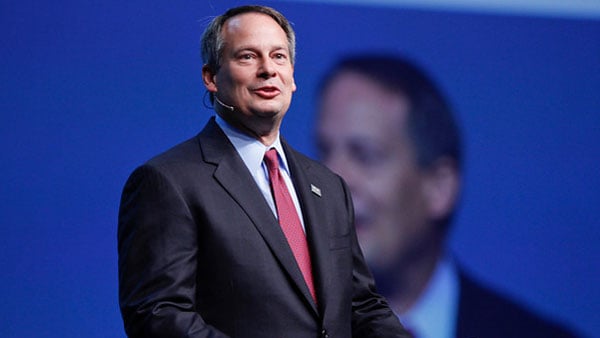
 CEO Walt Bettinger of Schwab.
CEO Walt Bettinger of Schwab.
Walt Bettinger, CEO of Charles Schwab, told a story: Back in 2004, when Schwab stock was languishing at around $6, he and Charles Schwab decided to survey customers who left the firm and find out why. One of the customers who had a million-dollar account said something that stuck with Bettinger: He was tired of all the nuisance fees. When Bettinger pointed out to the former customer that with his size account he wasn't subjected to them, the man said he didn't care: He just wouldn't do business with anyone who did that to their customers.
"So we went back to the drawing board and got rid of nuisance fees and cut commissions to $8.95," Bettinger told an audience of RIAs attending the Morningstar annual conference in Chicago. "Our board pointed out that we had just lost 40% of our revenue due to the internet bubble burst, and now we were recommending cutting out another 30% — how were we going to make that up? And we said, by the goodness of human nature. That if we do the right thing by our clients, they will simply choose to do more business with us."
And they were right; business did take off, at least until the financial crisis hit in 2008, which because the firm was largely invested in U.S. Treasuries, didn't impact them as harshly. In fact, they grew market share. The stock now trades at nearly $60.
Bettinger emphasized that customer theme throughout his interview with Tricia Rothschild, Morningstar's chief product officer. He noted that investors "were no different than any other type of consumer. There is an expectation on the part of investors that they aren't used to making trade-offs: in experience, quality of service, timeliness and cost. Any client's last great experience is their minimum expectation of every experience going forward."
That means customers are going to expect digital quality of service and an immediate real-time response. "We need to leverage technology to deliver better value to our clients," he said.



